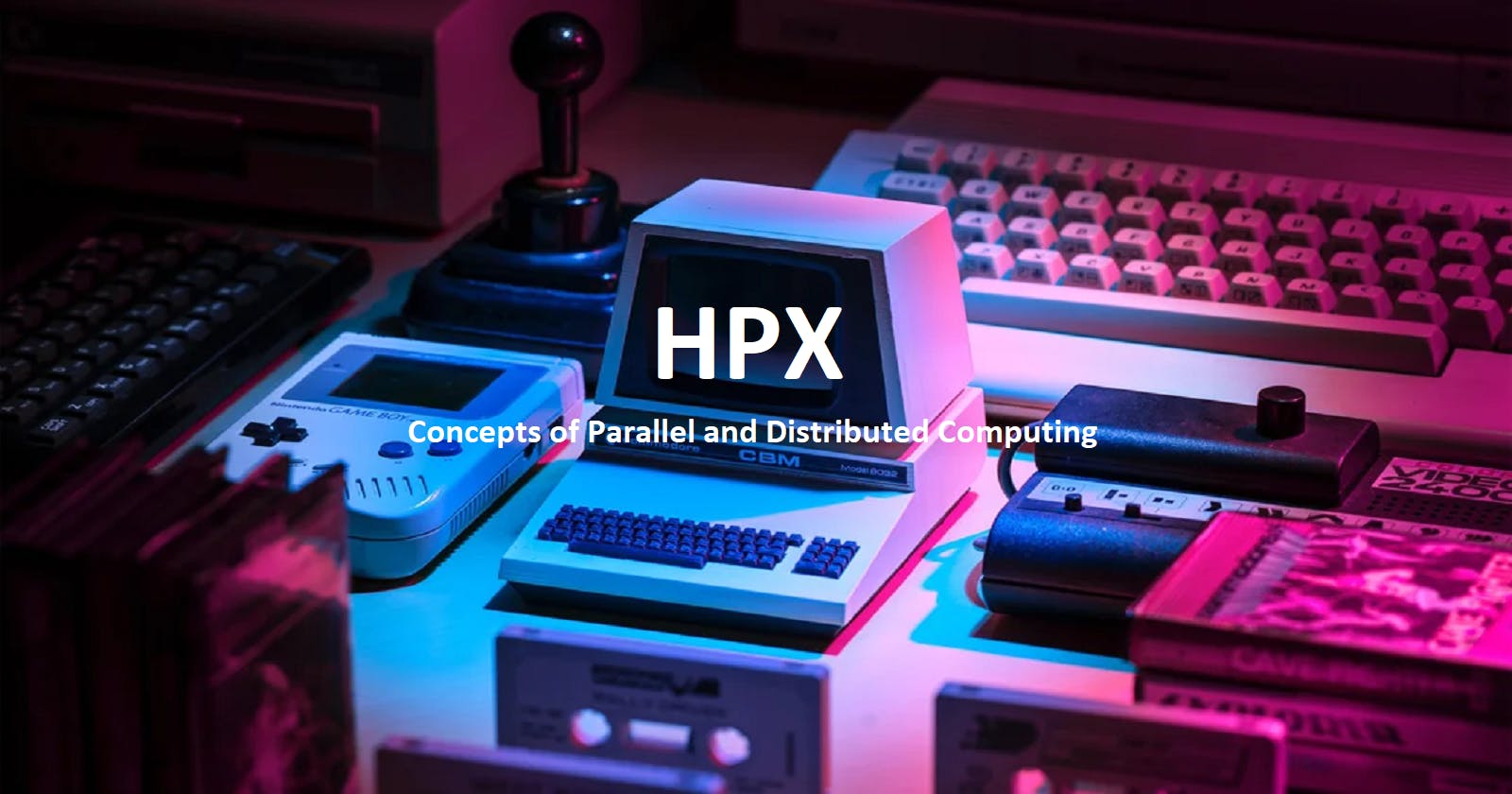HPX stands for "High Performance ParalleX." It is a parallel runtime system for applications of any scale, from multicore desktops to exascale supercomputers. HPX is designed to efficiently utilize all available computing resources, such as CPU cores, accelerators like GPUs, and even remote resources across a network. It provides a programming model that abstracts the complexities of parallel and distributed computing, enabling developers to write scalable and high-performance code more easily.
Certainly! Let's start with an overview of parallel and distributed computing concepts:
1. Parallel Computing:
Parallel computing involves the simultaneous execution of multiple tasks, or parts of a task, to achieve faster execution times and improved performance. Here are some key concepts:
Concurrency: Refers to the ability of a system to execute multiple tasks concurrently. Tasks may be executed simultaneously or interleaved in time.
Parallelism: Involves breaking down a task into smaller subtasks that can be executed simultaneously. These subtasks may execute on multiple processing units, such as CPU cores, GPUs, or distributed nodes.
Types of Parallelism:
Data Parallelism: Involves performing the same operation on multiple data elements simultaneously. This is common in SIMD (Single Instruction, Multiple Data) architectures.
Task Parallelism: Involves dividing a task into smaller, independent tasks that can be executed concurrently. Task parallelism offers more flexibility but may require careful synchronization.
2. Distributed Computing:
Distributed computing involves the coordination and execution of tasks across multiple interconnected computers or nodes. Here are some key concepts:
Distributed Systems: Consist of multiple autonomous computers that communicate and coordinate with each other to achieve a common goal. These systems may be physically distributed across different locations.
Message Passing: Communication between nodes in a distributed system typically occurs through message passing. Messages can be exchanged using various communication protocols and middleware.
Scalability: Distributed systems are designed to scale horizontally by adding more nodes to handle increasing workloads. Scalability can be achieved through techniques such as load balancing and partitioning.
Fault Tolerance: Distributed systems often encounter failures due to network issues, hardware failures, or software errors. Fault-tolerant mechanisms, such as redundancy, replication, and recovery protocols, are used to ensure system reliability and availability.
3. Parallel vs. Distributed Computing:
While both parallel and distributed computing aim to improve performance and scalability, there are key differences between them:
Resource Location: In parallel computing, all processing units are typically located within a single machine or computing cluster. In distributed computing, processing units are distributed across multiple machines or nodes connected over a network.
Communication Overhead: Communication overhead is typically higher in distributed computing due to the need for inter-node communication. In parallel computing, communication overhead is minimal since all processing units share a common memory space.
Scalability: Distributed computing offers better scalability as it can scale out by adding more nodes. Parallel computing may encounter scalability limits imposed by the resources available on a single machine or cluster.
Fault Tolerance: Fault tolerance is often more challenging to achieve in distributed computing due to the distributed nature of the system. In parallel computing, fault tolerance mechanisms are typically simpler since all resources are under a single administrative domain.
The concepts of parallel and distributed computing are fundamental to understanding the importance and capabilities of HPX. Here's how these concepts relate to HPX:
1. Parallelism in HPX:
HPX is designed to exploit parallelism at various levels, including task parallelism and data parallelism. Understanding parallel computing concepts is crucial for effectively utilizing HPX's capabilities for parallel execution. HPX enables developers to express parallelism in their applications through lightweight tasks, which can be executed concurrently across multiple processing units.
2. Distributed Computing in HPX:
HPX extends parallel computing to distributed environments, allowing tasks to be executed across multiple nodes interconnected over a network. This enables the development of scalable and distributed applications that can leverage resources from across a cluster or even a globally distributed system. Understanding distributed computing concepts is essential for deploying HPX-based applications in distributed environments and managing communication and synchronization overhead effectively.
3. Scalability with HPX:
HPX provides mechanisms for achieving scalability both within a single node (vertical scalability) and across multiple nodes (horizontal scalability). By understanding scalability concepts, developers can design and optimize HPX applications to efficiently utilize resources as workloads grow. HPX's distributed computing capabilities make it well-suited for building applications that can scale out to large clusters or scale up to utilize multi-core processors and accelerators effectively.
4. Fault Tolerance in HPX:
Fault tolerance is critical in distributed computing environments, where hardware failures, network partitions, and software errors are common. HPX incorporates fault-tolerant mechanisms to ensure the reliability and availability of distributed applications. Understanding fault tolerance concepts is essential for designing resilient HPX applications that can recover from failures gracefully and continue to operate under adverse conditions.
5. Performance Optimization with HPX:
Understanding parallel and distributed computing concepts is crucial for optimizing the performance of HPX applications. By leveraging parallelism and distributing workloads effectively, developers can minimize execution times, reduce communication overhead, and achieve better scalability. HPX provides tools and techniques for performance analysis and optimization, empowering developers to tune their applications for maximum performance.
Thank you
